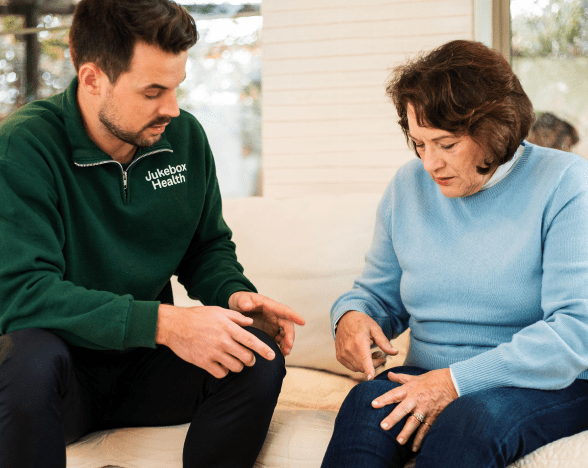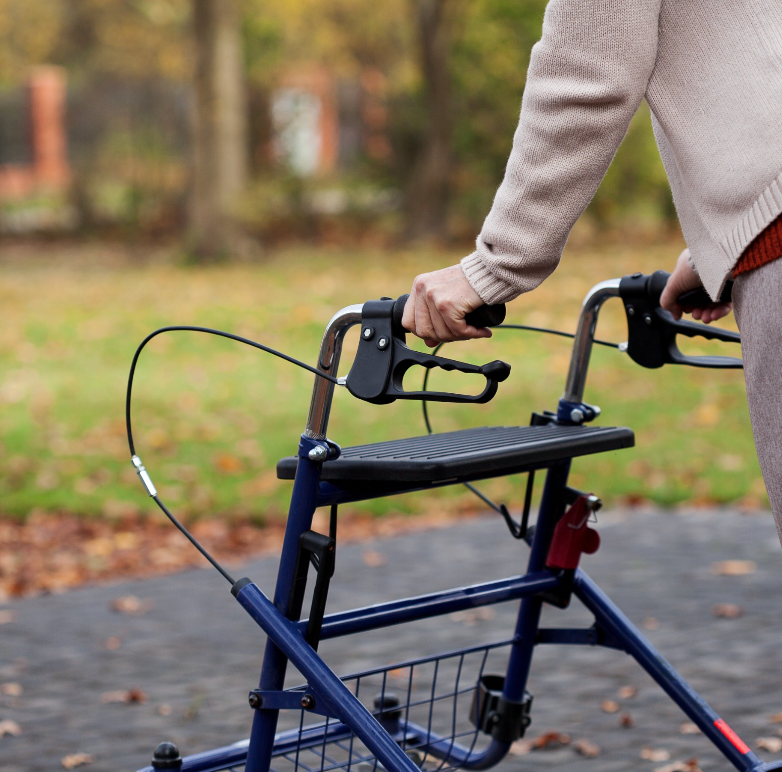Fear of Falling Leads To Greater Fall Risk
Although 36 million older adults will report a fall each year this doesn’t necessarily account for the millions of those that are experiencing a monthly, weekly or even daily fear of falling in their home.
It is in the best interest of plans to find ways to identify this key health indicator, especially as studies begin to show the direct correlation between one’s fear of falling and their increased risk of falling. In fact, those that report a fear of falling are 50% more likely to fall compared to those who do not report fear.
Though why is fear such a powerful predictor of falls?
The answer may lie in the way it can impact our physical and mental state.
Fear often leads to increased heart rate, dizziness and general unsteadiness of the body. And these symptoms can often lead to changes in one’s gait speed, stride lengths and stride widths which can ultimately increase one’s risk of injury. In more drastic situations the fear of falling may even cause some older adults to noticeably decrease or completely stop moving around their home, even if they are completely capable of doing so physically.
When asked about how fear of falling leads to immobility UCI Health geriatrician Dr. Elham Arghami states, “it’s a vicious cycle. Fear of falling causes seniors to limit their activities, social interactions and exercise. This inactivity leads to muscle weakness, especially in the spine and hip areas, and a loss of core strength.”
This scenario is unfortunately all too common especially for older adults who live alone or have few family members or friends visit on a regular basis.

For example, an older woman who is recently widowed might have tripped on the stairs but didn’t injure herself. Although the incident could have been much worse she is now realizing that if she were to fall or injure herself she would have no way of alerting anyone for help.
This fear causes her to spiral emotionally and without access to home modifications such as an alert system, handrails or a stair lift that could support her mobility she decides her best option is to avoid the stairs completely. Unfortunately forgoing the stairs only causes her body to be more susceptible to a fall. Her muscles weaken, her joints become tighter and with little activity throughout the day her balance only becomes worse.
Activities of Daily Living (ADLs) Decline
In addition, it’s important for health plans to realize that the fear of falling isn’t just a predictor of falls, it’s a predictor of limitations.In one study, researchers found that participants who reported a fear of falling were more likely to experience functional decline and difficulty with ADLs that are of key to living a normal life inside and outside of the home - including bathing, eating and toileting.
As mentioned above when an individual is afraid of falling, they may limit their physical activity and become more sedentary which can lead to a decline in overall physical function, confidence and self-efficacy.
Lack of confidence and social isolation can also cause older adults to feel the need to seek out forms of care assistance to support many ADLs and IADLs even if they are physically capable of doing so independently. All of which can be costly.
Services such as homemaking, home health aides and caregivers cost families, and especially health plans, millions in healthcare dollars each year. And while many members need these services to stay healthy there are still a variety of programs and services that plans can leverage to ensure a member is receiving a form of care that meets their level of needs, often having an opportunity to help the member and their family avoid extra costs.
Increased Social Isolation
Nearly one-fourth of adults aged 65 and older are considered to be socially isolated which can lead to a variety of health concerns including:- Depression
- Increased hospital visits
- Cognitive decline
- Onset of illnesses such as Alzheimer’s disease
And while there are a multitude of programs and services to minimize social isolation such as companion care or ride services, it’s not complicated to see how the fear of falling could continue to keep an older adult at risk of social isolation.
It’s been shown that older adults who are afraid of falling may limit their travel outside of the home and especially avoid new environments, which can limit their access to social activities and necessary services to living a vibrant life.

For example Gary, a 78 year old man, recently had a slip when stepping out of the shower. This event causes him to have heightened anxiety about the chances of falling at home. And as his fear grows he attempts to take matters into his own hands, slowly changing the way he moves and interacts within his home environment.
First, he decides that it would be best for him to only take showers during the afternoons when his wife is home. She often attends aerobics class throughout the week and he’s concerned that he’ll slip in the shower while she’s away.
He then realizes that there are a series of steps that lead from the kitchen out to his front porch. And although Gary usually loves to go outside in the early evenings to listen to birds, talk with neighbors, breathe in fresh air and read a great book he decides that it would be safer to stay inside and avoid any are of the home that could cause him to trip like he did in the shower.
Lastly, and possibly the most unfortunate, he decides to cut down on the activities he does outside of the home.
Gary usually drives himself to a small group and his weekly chess club but realizes that the stairs leading into the garage are uneven and lack a handrail. He’s okay when he and his wife are heading to an event together but is concerned he’ll fall on his way to the car when walking alone. By generally avoiding activities outside of the home Gary thinks he’s ensuring his safety and well being. However what Gary is doing might be the complete opposite of helpful to his health.
By not addressing his fear of falling and isolating himself from the things and people he loves, there is a high likelihood that he’ll end up experiencing an increase in depression, feelings of loneliness and continue to limit his mobility around the home.
How Health Plans Can Identify Fear of Falling
Health plans have a major role to play in addressing all areas of a member’s lifestyle that may indicate a decline in health and well being. And while we communicate with members and families constantly we can miss key information if we aren’t asking the full scope of their life and safety at home.
A way to find out whether your members have a fear of falling, is simply ask the question!
Care Management departments make thousands of calls to members and conduct Health Risk Assessments every year. Adding simple questions around level of mobility and fear of falling can help plans determine the best ways to get their members the resources they need before an incident occurs - ultimately becoming proactive not just reactive.
Health plans also send clinicians and non-medical caregivers into the home to conduct care gap closures, risk adjustment interventions and primary care in the home. There are a number of opportunities for health plans to seamlessly include this line of questioning into their assessments and workflows.

In addition, it’s important to educate members and their families on the relationship between fear of falling and a decline in health at home. Because, although falls are prevalent amongst the older adult population, there remains limited information and access to resources for families to utilize. Plans can have a major impact on improving the quality of life for members by simply making them aware of these key health indicators and the benefits available to them.
Lastly it’s critical that plans integrate proactive services to reduce fall risk for their members. Though companies such as Jukebox Health plans can access fall risks prevention strategies, occupational therapy-led evaluations and tailored home modifications that help pin-point risks within the home - all while gathering robust clinical data and member insights.
Addressing Fear of Falling Leads to Better Member Outcomes and Experience
In conclusion, while falls are a serious concern for older adults, the fear of falling can be just as dangerous.By providing resources and support to those who express a fear of falling, plans can reduce not only the risk of falling but limit the need for costly medical interventions, and greatly improve the member experience - giving members a sense of independence back. Taking a proactive and clinically-led approach to fall prevention and safety in the home has been proven to reduce risk of falling (by nearly 55%!) and plans who take the steps to integrate these solutions for their members will only come out stronger in the end.








